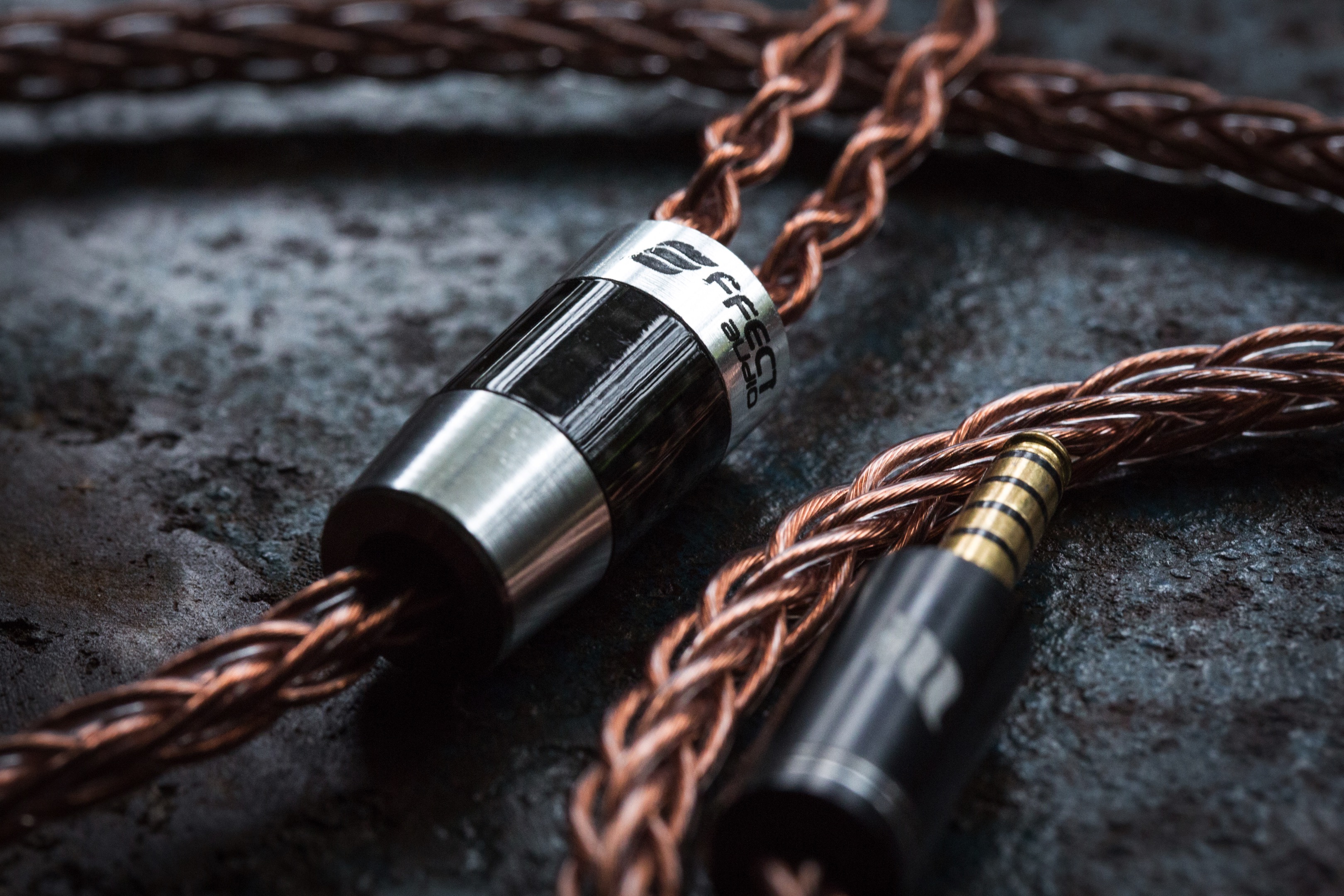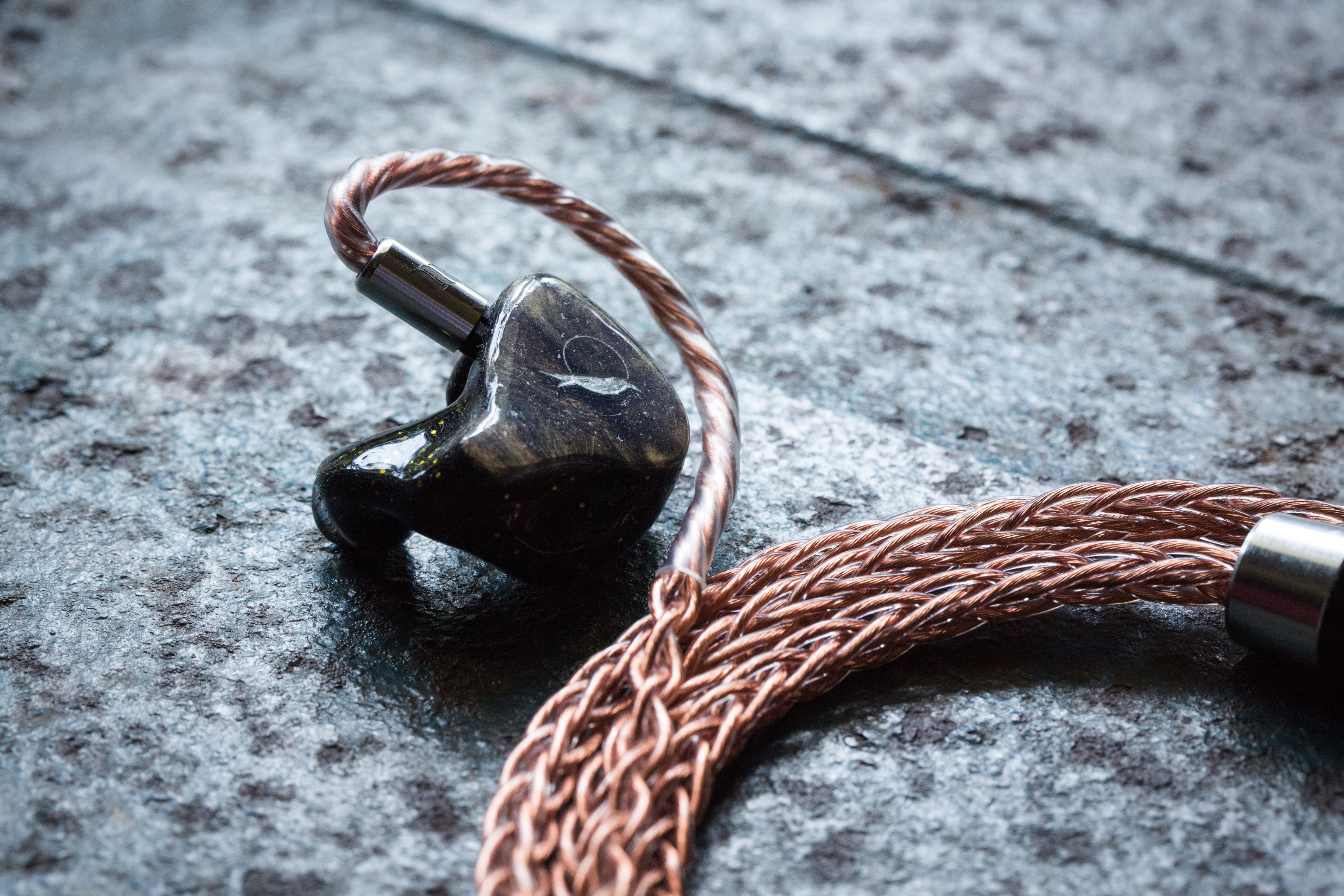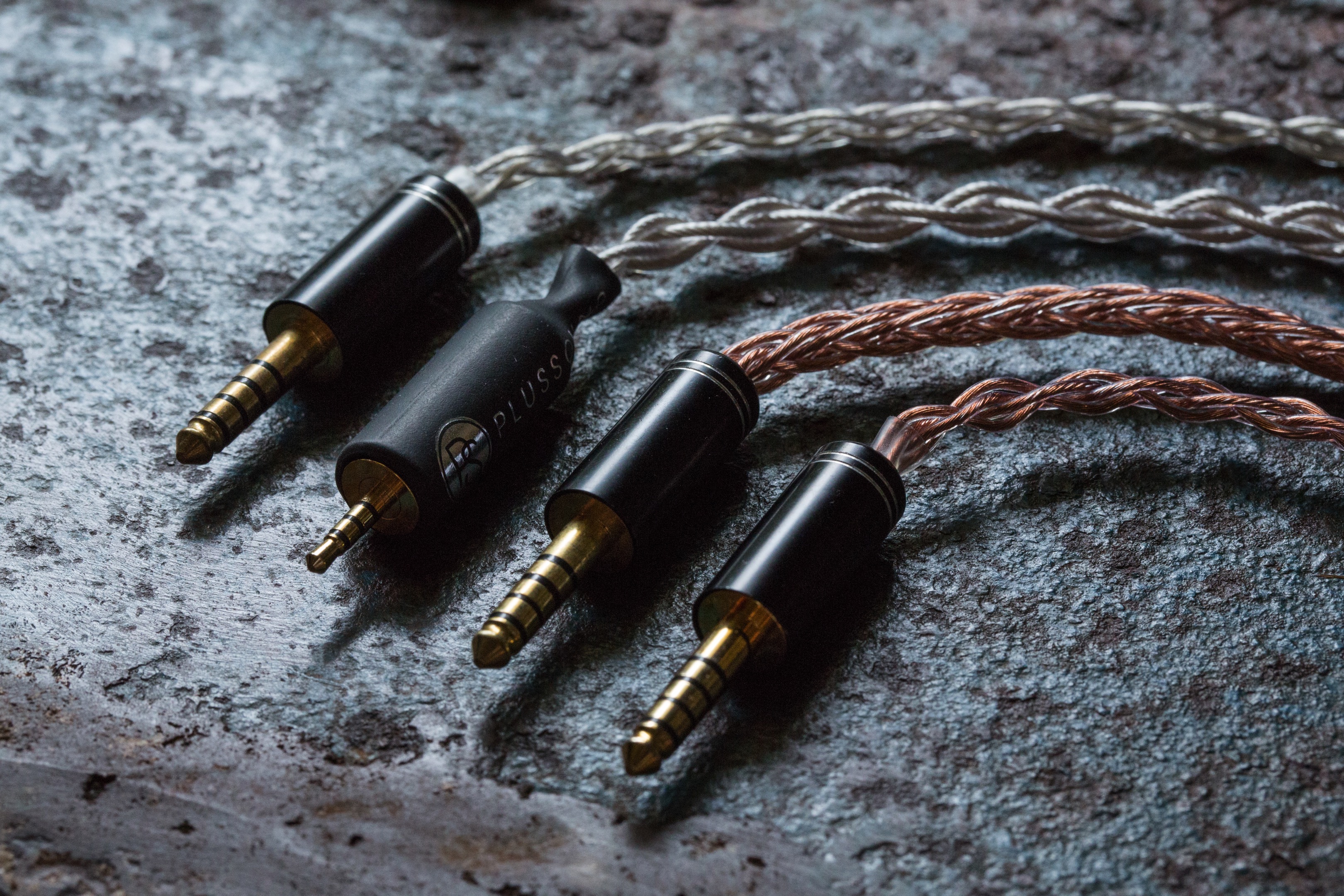DISCLAIMER: Effect Audio provided me with the Bespoke Ares II in return for my honest opinion. I am not personally affiliated with the company in any way, nor do I receive any monetary rewards for a positive evaluation. I’d like to thank Effect Audio for their kindness and support. The review is as follows.
Effect Audio is a Singaporean cable manufacturer of very high repute. Their contributions to the industry have received incredible acclaim, as has their collaborations with in-ear manufacturers like Empire Ears, Vision Ears and Jomo Audio. Though their industry-standard, 4-wire cables have claimed much of the praise, Effect Audio are now pushing forth their
Bespoke line consisting of
8-wire cables; double the wire count, double the performance… or so they hope. Our very own
PinkyPowers recently reviewed the
8-wire Thor Silver II and touted it as one of his favourite cables of all-time, but today I’ll be taking a look at the Bespoke Ares II; a
beastly evolution of Effect Audio’s award-winning staple.
Effect Audio Bespoke Ares II (8-wire)
- Wire composition: 26 AWG UPOCC Litz copper
- Default configuration: 8-wire
- Key feature(s) (if any): UltraFlexi insulation
- Price: $300
- Website: www.effectaudio.com
Build and Accessories
Effect Audio’s 8-wire Ares II arrives in a luxurious, matte-black monolith. It’s identical to the packaging that comes with the company’s Lionheart, except the paper sleeve has
Bespoke printed on top instead of
Lionheart. Similarly, sliding off the paper sleeve reveals a velvet door, with the cable nestled in a circular cut-out just underneath. The completionist in me would’ve loved to see a cable tie of sorts included inside, but the conductor’s tight braid keeps it uniform anyway.
When making the leap from 4 to 8 wires, there’s a clear compromise in ergonomics. The 8-wire Ares II certainly weighs more than any 4-wire cable, but – surprisingly – overall comfort is a toss-up. The cable’s density is doubled, which makes it impossible to tangle. Effect Audio’s braiding is impressively tight, but never stiff. In daily use, the only weight I ever feel lies above the ear; especially during and after inserting custom IEMs. But, once the monitors are locked in the canal, the additional heft is minimal; resulting in a listening experience that may require adaptation, but not constant attention.

As always, fit and finish with Effect Audio is impeccable. The Litz copper wires emit an extravagant lustre; gleaming and glimmering at every turn. The braids prove more uniform than their 4-wire counterparts all throughout, aiding both aesthetics and ergonomics. Effect Audio’s signature metallic Y-split and 2-pin connectors are as sleek as ever. Though, I can’t say the same about their
plain Jane 4.4mm plug. It’s a simple black barrel with a white Effect Audio logo printed on top, and it breaks continuity – to me – against the rest of the hardware. Thankfully, Effect Audio have since updated the hardware on their cables, including the option for a gorgeous, metal-and-carbon-fibre, 4.4mm Pentaconn plug.
Sound Impressions
The Bespoke preserves much of the original’s timbre: A lightly warm tone juxtaposed against an articulative lower-treble. The stage gains remarkable depth, but the most noteworthy change lies in its
definition. The cable outputs a pitch-black background with
ample headroom, resulting in effortless refinement; teeming with openness, dynamic contrast and air. While the stock Ares II tends to
fabricate space through its leaner lower-midrange, the Bespoke is more welcoming of harmonic detail. Instruments compromise neither body nor tone, yet remain congestion-free because of the cable’s innate expanse. Every element is resolved from transient to decay, with minimal warmth intruding on clarity.
Improved bass extension pairs the Ares II’s warm, meaty punches with palpable physicality. The low-end is tastefully accentuated, focused between the mid- and sub-bass frequencies. As a result, there’s a hint of rumble with every punch; inviting rhythm, energy and motion to the overall presentation. Thankfully, the Bespoke allows enough headroom to avoid veil. Excellent treble extension applies a perimeter of air around each
thump. So as the note arrives (and decays), the monitor is able to convey texture, tone and dynamic energy in a cleaner, more articulate and well-separated manner – all whilst maintaining titillating impact. Also, in tracks where bass drops are
waiting to happen, the Bespoke’s authority allows the listener to more easily follow the
crescendo; adding a dose of theatricality as the song approaches its climax.
Like the original Ares II, the Bespoke maintains a vibrant, emotive and musical upper-midrange. This vibrancy comes from a 6kHz peak, vulnerable to stridence with problematic pairings. However, the Bespoke alleviates this through heightened headroom. The rise is now more rounded, smooth and refined, but just as transparent, articulate and clear. The lower-mids – although largely neutral – gain excellent resolution, as harmonic detail is better rendered against the black background. Male vocalists with larger ranges (like Michael Bublé) reap most from this; amalgamating the Bespoke’s bodied bass, defined lower-midrange and melodious upper-mids to ensure musicality whether he’s crooning or belting. Finally, a stable stage fuels imaging and separation. Instruments maintain their size, energy and hue, but are placed within a more spacious environment; resulting in a more precise – yet tonally-correct – presentation.
The Bespoke’s top-end is
just lightly risen, aside from its 6kHz peak. As a result, the Bespoke’s treble maintains a largely neutral tone. However, it also consistently boasts sufficient definition. Its composure translates neither to sluggishness nor veil, as a result of excellent headroom and admirable extension. Notes decay
just quickly enough for proper contrast, outlined against a black background, and imaged precisely throughout the stage; resolving, clean and clear. It merely flirts with adding the
biting crispness that most silver cables (or even the Eos, for example) are known for, but clarity never falls short. The Bespoke’s linear upper-treble invites a more natural timbre, but its light lift serves dividends in dynamic energy; compensating for its lack of frills with excellent stability, decent transparency and palpable realism.
Suggested Pairings
Because of the Bespoke’s strong technical foundation, it’s a versatile cable that’ll synergise with most monitors it’s paired with. It doesn’t carry any notable frequency aberration(s), even though it does have an
overall tinge; lightly warm counterbalanced by the peppiness of the upper-midrange. Regardless, most of its major effects are technical in nature: Palpable increases in soundstage depth, background blackness, image stability, note resolution and spatial precision. So, if the qualities below are ones you’d love to see improved within your IEMs, the Bespoke Ares II will do you good:
Heightened transparency, without brightness: While the simplest way to coax clarity is by boosting the upper-treble, the Bespoke Ares II skilfully creates a blacker, more stable background. It’s as if the image lowers in distortion; becoming more effortless and well-defined whilst maintaining tonal balance. This is ideal if you own warmer IEMs – like the
Empire Ears Phantom or the
Custom Art Harmony 8.2 – and seek to
clean the image without altering its inherent timbre.
Increased bass physicality, without bloom, bleed or dominance: The Bespoke Ares II is ideal if you want to increase the bass’s sensation of impact, without necessarily boosting the mid-bass altogether. This is done through great extension. IEMs like the
Warbler Audio Prelude,
Lime Ears Model X and
64Audio A6t benefit most from this, as their tonally-correct low-ends become substantially more authoritative, guttural and musical, without becoming
dirty.
Greater midrange texture, without congestion: If you have monitors like the
Phantom,
Harmony 8.2 or the
Empire Ears Zeus and you find their lower-midrange biases may border on overt, the Bespoke Ares II makes an ideal pair. The conductor brings the region closer to neutral and – more crucially – adds authority and texture. So, you never get that cloy sensation of chestiness or fullness. Instead, you get great gravitas within a bellowing, deep lower-midrange.
Conversely, because of the Bespoke’s balance throughout the midrange, as well as its warmer tilt, here are aspects the
won’t benefit from the conductor upgrade:
Fuller, meatier and more-bodied notes: Although the Ares II is a copper cable, it does not have the fullness and euphony that copper conductors generally do. Its light warmth is confined strictly to tone, whilst note density, body and richness remain largely unchanged. In fact, its neutral lower-midrange may invite a lighter, less-heavy-handed delivery. In-ears with wispier notes – like the
Nocturnal Audio Avalon – won’t benefit (in meatiness, at least) with the Bespoke.
Cleaner, brighter vocals: The Bespoke places its vocals neutrally on the stage; a combination between increased stage depth and a linear upper-treble. Despite its bias towards the upper-mids, the Bespoke should
not be your pick if you’re looking to give vocals a cleaner, crrisper tone. The midrange will tend towards melodious and sweet; vibrant and zing-y. With the
64Audio A6t as an example, this added depth gives too much of a contrast between the upper-mids and the 7kHz peak, which makes it less-than-ideal for peaky-er pairings or for low-level listening.
Select Comparisons
Effect Audio 4-wire Ares II ($149.90)
As previously mentioned, the default and Bespoke variants share many tonal similarities. However, in terms of stage expansion, background blackness, imaging precision and resolution, the original noticeably lags behind. Simply put, the Bespoke accomplishes all of its works with
less effort. In its delivery, there’s a constant sense of refinement, authority and ease. As a result, the Bespoke comes equipped with greater control over its arsenal. Its 6kHz peak is smoother, its lower-midrange is better-textured and its low-end is physically more sound as well. Succinctly said, fans of the standard Ares II will find
much to love in its Bespoke variant, if they won’t mind the extra weight
and the heftier price tag.
Effect Audio 4-wire Thor Silver II ($399)
The Thor Silver II displays similar levels of refinement to the Bespoke Ares II, because of its silky, feathery treble. It’s lightly raised and articulate, yet skilfully smoothened. Nevertheless, the Thor cannot achieve the same effortlessness that the Bespoke does. The latter portrays a blacker background, superior separation and a noticeably larger stage. Bass is a much closer contest between the two. The Thor portrays excellent physicality and palpable impact. Its mid-bass is more
thump-y, while the Bespoke spreads its energy between the mid- and sub-bass. I’d call extension a wash, but the Ares II’s blacker background gives its low-end greater resolution. The Thor has a lighter (less dense) midrange, while the Bespoke renders more organic texture. But, this gives the Thor Silver II a sense of speed that the Ares has less of.
PlusSound Exo Silver + Gold ($349.99)
More so than the Thor Silver II, PlusSound’s Exo Silver + Gold bears several resemblances to the Bespoke Ares II. Although the Exo’s accentuated upper-treble gives it a brighter tone, it presents a well-structured midrange, as well as excellent sub-bass extension. The mid-bass shows excellent control, even if it’s not necessarily as well-textured as the Bespoke’s. Additionally, it competes with the Ares II in soundstage width, though the Bespoke has the edge in depth. Background blackness and separation also go to Effect Audio, while the Silver + Gold’s larger images aim for utmost engagement. The PlusSound cable has a
slightly tizzy-er lower-treble, though it only rears its head with select pairings. Ultimately, the Silver + Gold gets decently close to the Bespoke’s technical performance, but with a brighter twist.
Verdict
Effect Audio’s Bespoke Ares II is an instant classic. Bringing their award-winning cable to new technical heights, the metal uptake serves dividends in headroom, soundstage expansion, imaging precision and resolution; presenting music with outstanding effortlessness and admirable transparency, yet steeped in a life-like, organic warmth. While compromises in ergonomics are all but guaranteed, Effect Audio’s stellar craftsmanship prevents the Bespoke from showing its heft. And as always with the Singaporean atelier, aesthetics are simply stunning. In summary, Effect Audio have scored themselves another winner in the Bespoke Ares II; a gateway into the vast, open expanse that eight-wire conductors have to offer.

















